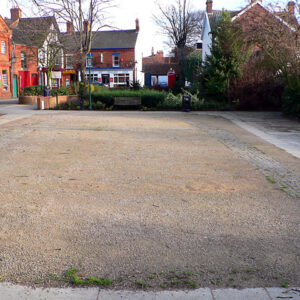 It was remarked during a recent historic buildings conference that churches have become almost invisible in Britain. It is certainly true that there are many people who walk and drive past them without a thought.
It was remarked during a recent historic buildings conference that churches have become almost invisible in Britain. It is certainly true that there are many people who walk and drive past them without a thought.
This a shame, because in many villages and towns, the churches are the oldest buildings in the area. They are also places where the human story of life and death is told and retold over and over again. Take a visit to your nearest church and you are visiting a place not just of religious worship, but of community life. In every church countless babies were welcomed into the community, and countless farewell’s said to those who left. Stop for a moment and think of the thousands of prayers said, pleas made, bargains struck and witnesses given. The church was the place where, for centuries people revealed their innermost thoughts and fears, confessed their sins and made their peace with the universe.
Not something that should be passed without a thought.
Most, but not all, of Lincolnshire’s churches date to at least the medieval period. The church, faced with the silent invasion of the monastic orders, established a priest in every parish and the tithes and endowments of the parishioners would be manifest in stone buildings large and small. Even when medieval villages have disappeared, the church often remains to signify what was once there.
Of the medieval churches there are some that pre-date the Norman invasion; Marton, Hackthorn, Stow and Holton le Clay to name but a few. These were later expanded and re-built, but you can pick out sections of original stonework and, particularly at Stow, get a sense of how the mighty Saxo-Norman buildings would look and feel.
However, it is believed that all these early rural churches were established during the reintroduction of Christianity to Lincolnshire in the 7th century, as part of the Gregorian (or Augustine) Mission to convert the Saxons. But Christianity had arrived in Lincolnshire before that time.
Exactly when Christianity arrived in Roman Britain is uncertain, but by the 4th century it was established in Lincoln and practised in the large wealthy villas. One of the landmarks of Roman Lincoln is the Newport Arch, and if you walk towards the town centre a little way, there is an open space on the right.
That open area, often overlooked, contains a well (covered over with glass) and the outline set in cobbles of a small building. The building represented is the church of St Paul-in-the-Bail. Evidence from the excavation of this site places the origins of the church in the late or sub- Roman period, around the 5th to 6th century. It also suggests the possibility of Lincoln having a Christian community that continued from the Roman period, through into the Saxon period and beyond.
So, on the basis of current knowledge, this simple monument, St Paul-in-the-Bail, is Lincolnshire’s first Church.
There is a small post-script to this particular article because in 1985 St Paul-in-the-Bail was witness to another first. The cobbles that represent Lincolnshire’s first church were also the first archaeological plan drawn by a teenage Jim Snee. Life is the combination of many extraordinary journeys, one of mine began there.
